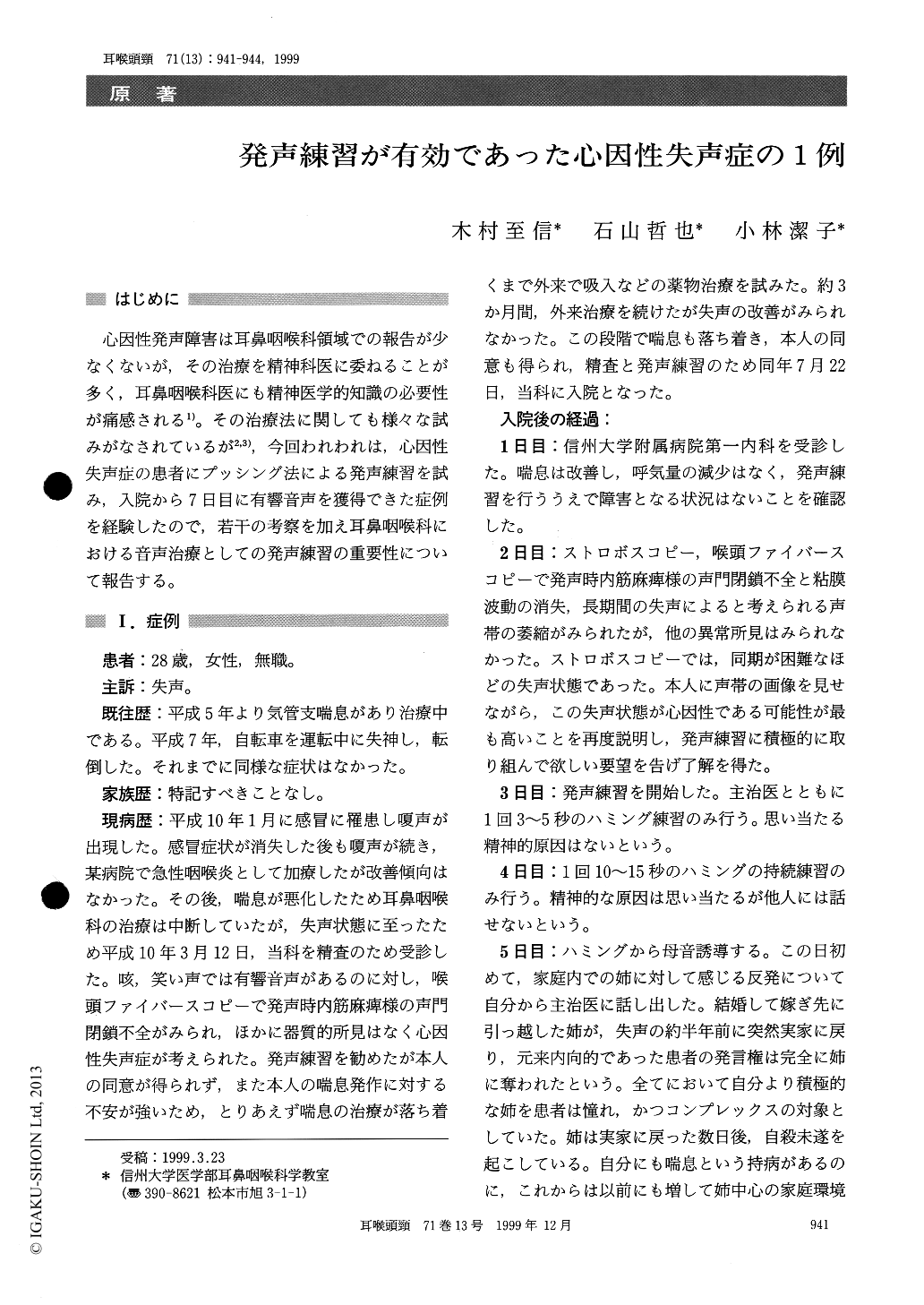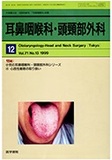Japanese
English
- 有料閲覧
- Abstract 文献概要
- 1ページ目 Look Inside
はじめに
心因性発声障害は耳鼻咽喉科領域での報告が少なくないが,その治療を精神科医に委ねることが多く,耳鼻咽喉科医にも精神医学的知識の必要性が痛感される1)。その治療法に関しても様々な試みがなされているが2,3),今回われわれは,心因性失声症の患者にプッシング法による発声練習を試み,入院から7日目に有響音声を獲得できた症例を経験したので,若干の考察を加え耳鼻咽喉科における音声治療としての発声練習の重要性について報告する。
A female patient aged twenty eight years old with psychogenic aphonia for 6 months was treated by voice therapy as a primary treatment. This therapy is called as the Pushing Method. At first we asked her to produce a humming voice. After she becameable to hum for several seconds, a combination of hum and vowel was attempted. By the time she became able to produce the combination well, she recovered from aphonia. Then we referred her to a psychologist for psychotherapy. Most patients, in-cluding this patient, denied the presence of emo-tional problems or psychological stress as a causa-tive factor of aphonia during their first visit. The fact that she had her voice back was made it easier for her to remember the reason why she had aphonia. We concluded that as a primary treatment for psychogenic aphonia voice therapy is better than psychotherapy alone.

Copyright © 1999, Igaku-Shoin Ltd. All rights reserved.


